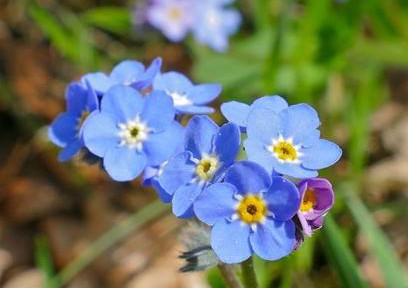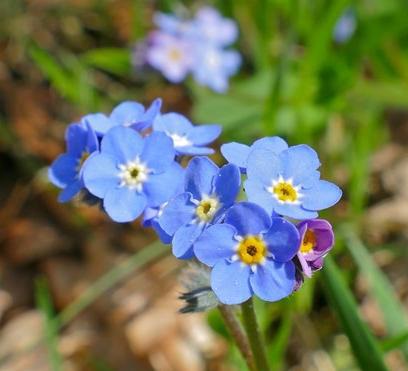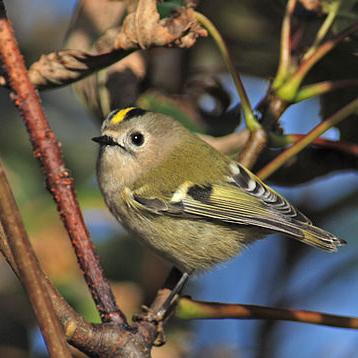
Citizen Science is all about getting out and about, noticing, learning about and recording the wildlife that you see – so a couple of things to get looking for when you are out and about volunteering, walking and just on the way to work or school…
Wood Forget-me-not (Myosotis sylvatica)
There are many different species of Forget-me-nots that all fall under the genus Myosotis. They are: Early, Field, Changing, Water, Creeping, Tufted and Wood Forget-me-not – many with a similar appearance!
It is thought that most species of Forgetme-not in the UK are now probably forms of Wood Forget-me-not. It is a beautiful plant with small bright blue flowers (6-10mm across) with whiteorange centres. Flowers are usually found in clusters of at least 5. It has hairy stems
and oblong shaped leaves. It can be found along and within woodlands, and sometimes within hedgerows. Wood Forget-me-not flowers in the UK from April till July so given the cold start this year, at least a few more weeks to see these!
Goldcrest (Regulus regulus)
The Goldcrest is one of the UK’s smallest birds which can normally be found throughout the UK all year-round.
- It’s body is an olive-green colour with a pale belly. The distinguishing feature of the goldcrest is it’s striking yellow stripe on their heads – making it unmistakable from any other similar looking warbler.
- Males tend to have a more orangey tinge to the stripe on their heads. Young goldcrests are more difficult to identify as they lack the crown stripe.
- They have a small, thin beak which is ideal for picking insects out from between pine needles.
- Goldcrests can be found in a variety of habitats: woodland, parks, gardens and farmland. However, they particularly favour pine forests.
If you would like to learn more and get more involved in citizen science, take a look at our citizen science webpages for loads more ideas.

